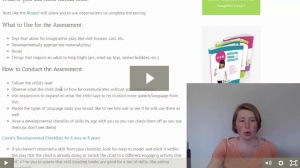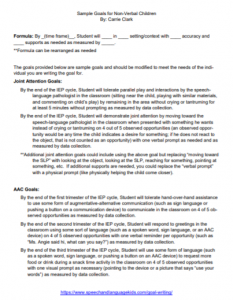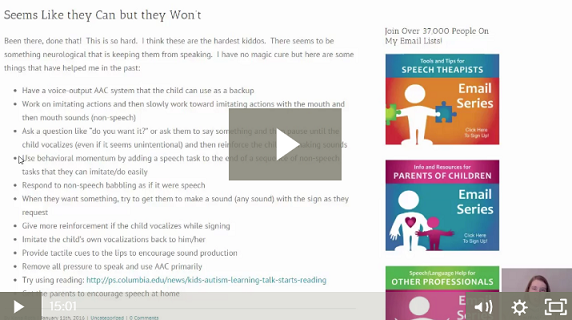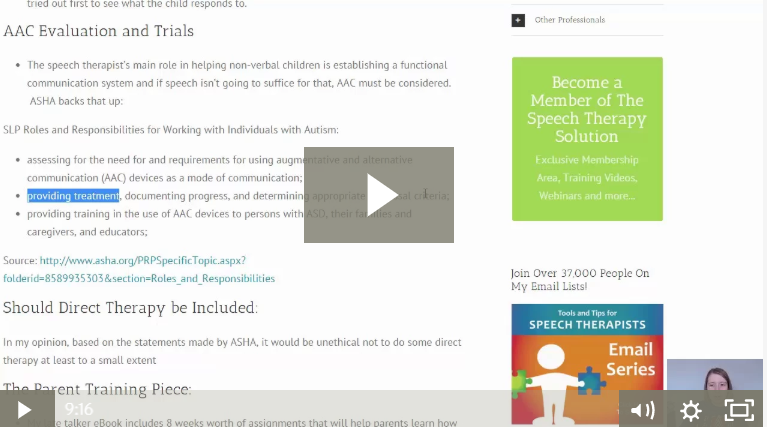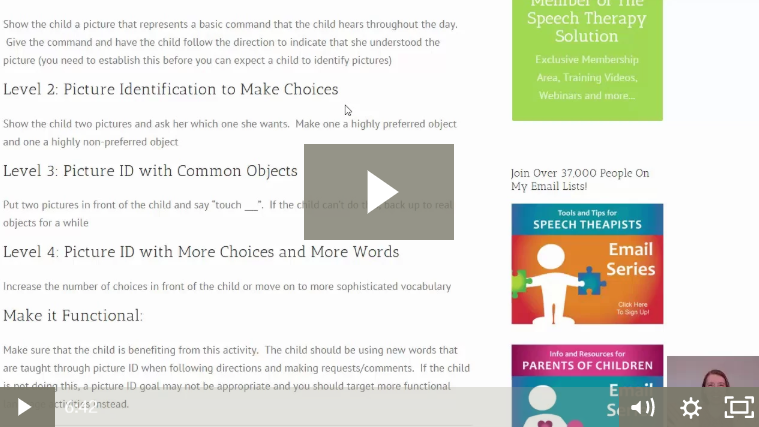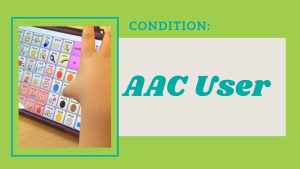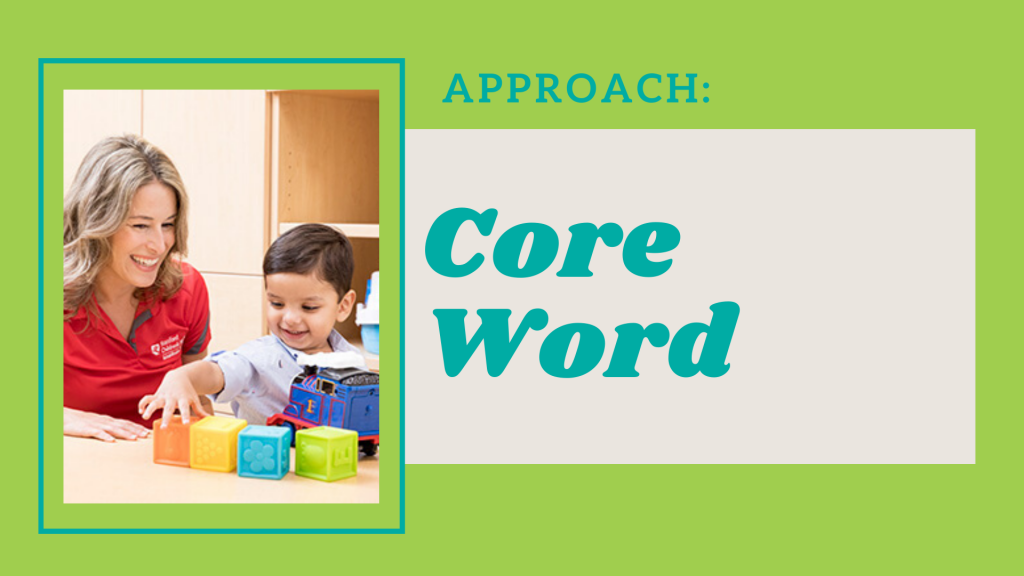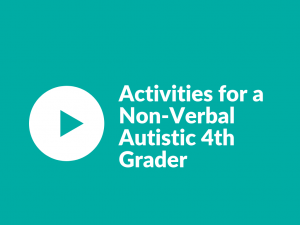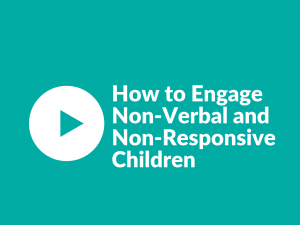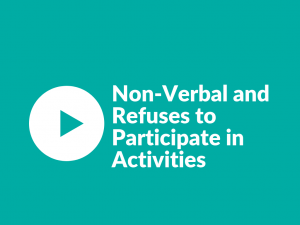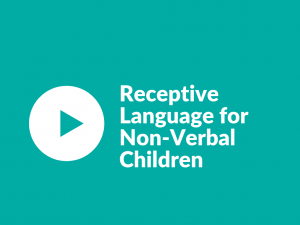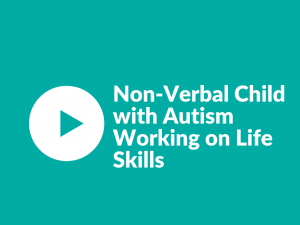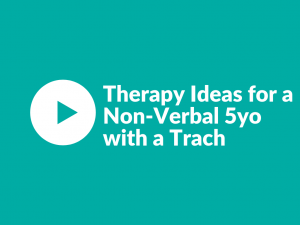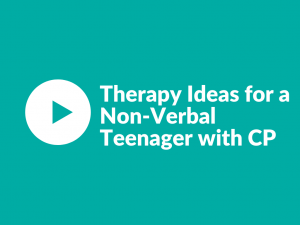Condition: Non-Speaking
Jump To:
Norms by Age Evaluation Suggested Goals Therapy
Definition:
A non-speaking child is one who is not yet speaking words at all or only speaks very few words. These children used to be labeled as “non-verbal” but we are transitioning away from that label as you can be “verbal” (use vocabulary/words) without speaking them out loud.
Developmental Norms:
To give you a point of reference for how many words a child should be using, here is a chart based on age. The number of words represents the average size of a child’s vocabulary at that age, but slightly lower isn’t necessarily a large concern. However, if a child is far off from these numbers, there may be a problem.
Age of Child ~ Number of Words
12 months ~ 2-6 words
15 months ~ 10 words
18 months ~ 50 words
24 months (2 years) ~ 200-300 words
30 months ~ 450 words
36 months (3 years) ~ 1,000 words
42 months ~ 1,200 words
48 months (4 years) ~ 1,600 words
Obtained from Linguisystems Website
Evaluation:
If you are evaluating a child who is not yet speaking, a full communication evaluation should be conducted. A full medical history and background should be collected and all areas of communication should be considered in the evaluation. Here are some additional resources that will help you with various aspects of evaluating this condition:
How to Evaluate (and Treat) Non-Speaking Children
An hour-long webinar recording with an overview of how to evaluate and treat a non-speaking child.
Have a child who can’t sit down for standardized assessments? Find out here how to conduct a play-based assessment instead.
Sample Goals for Non-Speaking Children
List of sample goals that can be used to formulate goals for children who aren’t speaking yet.
Suggested Goals:
The results of your evaluation and your clinical observations will guide your decision for what to address in therapy. Here are some goals that may be helpful for children who are not speaking. You can click on one of the goals below to learn more. Or, scroll down to the therapy section for more in-depth resources and support for treating this condition.
Therapy:
Here are some more resources and information that may help you when it comes to treating this condition.
How to Evaluate and Treat Non-Speaking Children
An hour-long webinar recording with an overview of how to evaluate and treat a non-speaking child.
Getting Non-Speaking Children to Speak
Do you feel like a child should be able to talk but just isn’t yet? This 15-minute video will give you strategies for helping the child make the leap to spoken speech.
Parent Training for Non-Speaking Children
This quick video was originally created to show you how to do parent training for children with autism, but many of the strategies are similar for late talkers.
Receptive Vocabulary Activities for Non-Speaking Children
A quick video to give you tips for working on receptive vocabulary for non-speaking children by addressing the skill of “picture identification”.
Alternative Goals for “Communicating Wants and Needs
What do you do when your client isn’t making progress with the old “communicate wants and needs” goal? Here are several alternatives that are more specific and make it easier to show progress.
Receptive Vocabulary Activities for Non-Speaking Children
A quick video to give you tips for working on receptive vocabulary for non-speaking children by addressing the skill of “picture identification”.
Resources and guides for working with children who are using augmentative/alternative communication (AAC) devices or systems to communicate (or who would benefit from them).
The Core Word approach is a way to teach young children to speak by choosing a few, simple words to target at a time that are functional in a variety of settings. Click to learn more about how this approach can be helpful for non-speaking children.
Case Studies:
Sometimes it’s helpful to hear a break down of how to support a specific child. The following videos are examples of questions that some of our users had about specific cases of non-speaking children that they needed help on. Watch how Carrie breaks down what to focus on and how to proceed.


